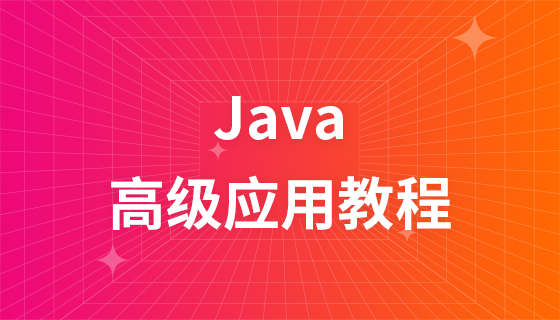
The content of this article is about the method of configuring two data sources in the springboot project. It has certain reference value. Friends in need can refer to it. I hope it will be helpful to you.
This article mainly introduces how to configure two data sources (mysql and oracle) in a springboot project;
1. Introducing related dependencies
<!-- https://mvnrepository.com/artifact/mysql/mysql-connector-java -->
<dependency>
<groupId>mysql</groupId>
<artifactId>mysql-connector-java</artifactId>
<scope>runtime</scope>
</dependency>
<!--oracle 驱动 -->
<dependency>
<groupId>com.oracle</groupId>
<artifactId>ojdbc6</artifactId>
<version>11.1.0.7.0</version>
</dependency>When the ojdbc driver package version is too low, an error will be reported as shown below, that is, the driver jar is incompatible with the database version:

Spring:
datasource:
base:
driver-class-name: com.mysql.jdbc.Driver
jdbc-url: ${base.db.url}
username: ${base.db.username}
password: ${base.db.password}
oa:
driver-class-name: oracle.jdbc.driver.OracleDriver
jdbc-url: ${oa.db.urL}
username: ${oa.db.username}
password: ${oa.db.password}
hikari:
max-lifetime: 60000
login-timeout: 5
validation-timeout: 3000
connection-timeout: 60000
idle-timeout: 60000Package com.**.config;
import org.springframework.beans.factory.annotation.Qualifier;
import org.springframework.boot.context.properties.ConfigurationProperties;
import org.springframework.boot.jdbc.DataSourceBuilder;
import org.springframework.context.annotation.Bean;
import org.springframework.context.annotation.Configuration;
import org.springframework.context.annotation.Primary;
import javax.sql.DataSource;
public class MultiDataSourceConfig {
@Bean (name = "primaryDataSource")
@Qualifier("primaryDataSource")
@Primary //定义主数据源
@ConfigurationProperties (prefix = "spring.datasource.Base")
public DataSource primaryDataSource () { return DataSourceBuilder.create().build (); }
@Bean (name = "secondaryDataSource")
@Qualifier ("secondaryDataSource")
@ConfigurationProperties (prefix = "spring.datasource.oa")
public DataSource secondaryDataSource () { return DataSourceBuilder.create().build (); }
}Package com.**.config;
import org.apache.ibatis.session.SqlSessionFactory;
import org.mybatis.spring.SqLSessionFactoryBean;
import org.mybatis.spring.SqLSessionTemplate;
import org.mybatis.spring.annotation.MapperScan;
import org.springframework.beans.factory.annotation.Qualifier;
import org.springframework.context.annotation.Bean;
import org.springframework.context.annotation.Configuration;
import org.springframework.context.annotation.Primary;
import org.springframeworkcore.io.support.PathMatchingResourcePatternResolver;
import org.spr ingframework.jdbc.datasource.DataSourceTransactionManager;
import org.springframework.transaction.PlatformTransactionManager;
import javax.sql.DataSource;
@Configuration
@MapperScan (basePackages = "com.**.mapper", sqlSessionTemplateRef = "primarySqlSessionTemplate")
public class SqlSessionTemplate1 {
@Bean (name = "primarySqlSessionFactory")
@Primary
public SqlSessionFactory primarySqlSessionFactory (@Qualifier("primaryDataSource") DataSource dataSource)
throws Exception{
SqLSessionFactoryBean bean = new SqlSessionFactoryBean ();
bean.setDataSource (dataSource);
bean.setMapperLocations (new PathMatchingResourcePatternResolver().getResources (locationPattern: "classpath: mybatis/mapper/*. XmL"));
return bean.getObject();
}
/**
* 配置声明式事务管理器
*/
@Bean (name = "primaryTransactionManager")
@Primary
public PlatformTransactionManager primaryTransactionManager (@Qualifier("primaryDataSource") DataSource dataSource) {
return new DataSourceTransactionManager (dataSource);
}
@Bean (name = "primarySqlSessionTemplate")
@Primary
public SqlSessionTemplatel primarySqlSessionTemplate(@Qualifier("primarySqlSesionFactory") SqlSessionFactory sqlSessionFactory) throws Exception {
return new SqlSessionTemplatel(sqlSessionFactory);
}
}Package com.**.config;
import org.apache.ibatis.session.SqlSessionFactory;
import org.mybatis.spring.SqLSessionFactoryBean;
import org.mybatis.spring.SqLSessionTemplate;
import org.mybatis.spring.annotation.MapperScan;
import org.springframework.beans.factory.annotation.Qualifier;
import org.springframework.context.annotation.Bean;
import org.springframework.context.annotation.Configuration;
import org.springframework.context.annotation.secondary;
import org.springframeworkcore.io.support.PathMatchingResourcePatternResolver;
import org.spr ingframework.jdbc.datasource.DataSourceTransactionManager;
import org.springframework.transaction.PlatformTransactionManager;
import javax.sql.DataSource;
@Configuration
@MapperScan (basePackages = "com.**.oraclemapper", sqlSessionTemplateRef = "secondarySqlSessionTemplate")
public class SqlSessionTemplate2 {
@Bean (name = "secondarySqlSessionFactory")
public SqlSessionFactory secondarySqlSessionFactory (@Qualifier("secondaryDataSource") DataSource dataSource)
throws Exception{
SqLSessionFactoryBean bean = new SqlSessionFactoryBean ();
bean.setDataSource (dataSource);
bean.setMapperLocations (new PathMatchingResourcePatternResolver().getResources (locationPattern: "classpath: mybatis/oraclemapper/*. XmL"));
return bean.getObject();
}
/**
* 配置声明式事务管理器
*/
@Bean (name = "secondaryTransactionManager")
public PlatformTransactionManager secondaryTransactionManager (@Qualifier("secondaryDataSource") DataSource dataSource) {
return new DataSourceTransactionManager (dataSource);
}
@Bean (name = "secondarySqlSessionTemplate")
public SqlSessionTemplatel secondarySqlSessionTemplate(@Qualifier("secondarySqlSesionFactory") SqlSessionFactory sqlSessionFactory) throws Exception {
return new SqlSessionTemplatel(sqlSessionFactory);
}
}The above is the detailed content of How to configure two data sources in springboot project. For more information, please follow other related articles on the PHP Chinese website!
 SpringBoot project building steps
SpringBoot project building steps
 What is the difference between j2ee and springboot
What is the difference between j2ee and springboot
 What key do you press to recover when your computer crashes?
What key do you press to recover when your computer crashes?
 Cancel WeChat campaign
Cancel WeChat campaign
 How to use oracleparameter
How to use oracleparameter
 Which one is easier, thinkphp or laravel?
Which one is easier, thinkphp or laravel?
 How to learn python programming from scratch
How to learn python programming from scratch
 How to use subplot in matlab
How to use subplot in matlab






